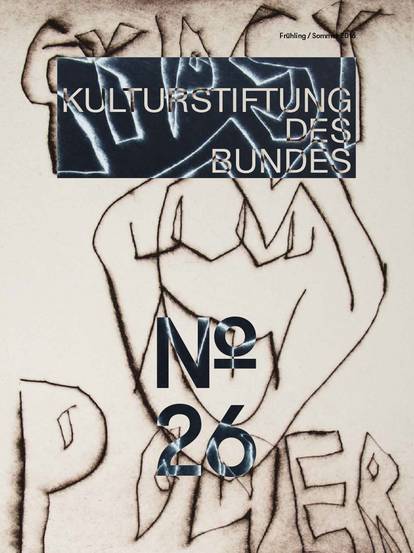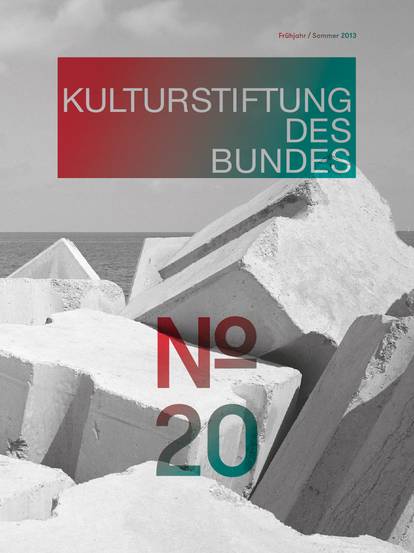How have attitudes about life and death changed in modern times and what new concepts and myths is society being confronted with? The philosopher Petra Gehring describes how our morals are shifting and why the undead is such hot topic in ethical circles.
by Petra Gehring
Is this modern era one in which technologies postpone death ever further, in which death is rendered invisible and devaluated, where only life is valued, ‘deciphered’ and mechanized? Do we refuse to accept death – the mere destruction of life which one may regard as a necessary evil or not – or do we view it as “belonging to life”, an object of self-realization, romanticized by new, modern images of death? On one hand, we have the repression of death, the formlessness of dying, biotechnological scenarios for abolishing death, and on the other, assisted suicide, the right to die, mass-media depictions of mortal fear, corpses and mourning.
Our relationship with death has become seemingly contradictory. It is strange that old-fashioned “death” pales in comparison to profane forms of “the conclusion of life”. However, death has not merely become inconsequential, but also intangible and eerie. And the boundaries seem to have become blurred. For example, when exactly is someone or something alive? Aren’t life-enhancing technologies responsible for creating strange, new states of existence between life and death?
And aren’t our morals shifting as well? We have become accustomed to bioethicists debating the boundaries of life and death as two aspects of one common issue – whereas long ago they were accepted as completely different human experiences, e.g. pregnancy (birth) and dying. Along with those who believe life should be protected at all costs, there are others who reflect on the value of human life and when it’s no longer worth living. And in this way, bioethics has shifted the issue of human embryonic stem cells closer to that of the elderly woman lying in a coma. These were once regarded as an indefinable laboratory product and a human being approaching death. Now both seem to more closely resemble entities in a grey zone, states of existence on the boundary of life. The arguments sound the same in terms of how we assess the dying patient or the cell as ‘human life’. The issue of the undead is very much alive in ethical circles as well.
1. Life’s rise to power
The way death and dying are changing today is largely the result of ‘life’ whose career began in the early modern era. This view is shared by most contemporary theories today. Many of us see life as a collective singular for a supraindividual whole, to which one attributes a biological quality and natural dynamics, and which extends over generations. But this is a modern construct. Before 1800, being alive was a quality which could possess a character. And most would have agreed that mortality was an earthly and perhaps even universal quality. People spoke of their “own life” or a “good life”. By this they meant life as a narrative or a memory, as the course of life and not as a substance of nature.
With the development of tissue physiology, biology, demographics, anthropology and sociology, a new concept began forming after 1800 which assumed ‘life’ was a scientific quantity, something empirical. A thing that could apply to cells as well as individuals or entire peoples, societies or species. Cells do not actually die, they divide occasionally and ensure the continuum of life. Similarly, inherited characteristics survive the death of a specimen of a genus or species as soon as the specimen reproduces. Life in this sense – anchored within internal biological processes – not only became the basic parameter of modern medicine, but also biomedicine and its techniques, epidemiology and immunology, intensive care and transplantation surgery, genetic diagnostics and (as announced) gene therapy. The empirical approach to ‘life’ also influenced the 19th-century sociological view of society – regarding moral statistics, welfare, social hygiene, eugenics and the ever intensifying battle against delinquency.
The life sciences, as we call them today, are strongly connected to the concept of social benefit. At the turn of 20th century, an atmosphere of Lebensreform helped merge the natural scientific view of the world, socio-technical visions and life philosophies of various kinds. Biological politics began to take form along with criteria to assess the value of life, the first techniques of human selection and medically assisted euthanasia. It had a preventative quality. It tossed around the idea of ‘designing’ the quality of life at different scales. And it had only a limited interest in individuals who required treatment at the time. The prevalent view was that if a measure were to improve life, then applying it to the body of each individual would ultimately result in the treatment of the entire population – creating the man of the future. For its own sake, life can devalue and reject something living without going so far as to kill it, or in other words, without reverting to the concept of death.
According to Michel Foucault, the power of life is what underlies sociopolitics of modernity. Politics is, in fact, biopolitics which permits things to live and requires things to die – whereby dying, bereft of the gravity and solemnity of death, can be enlisted to produce life. And in fact, this is exactly what’s happening more and more. Consequently, there was talk about the “disappearance” of death in the 1970s and 1980s. Elisabeth Kübler-Ross and Ivan Illich criticized the medical field for suppressing death, and Philippe Ariès claimed that modern death had become “completely opposite”, a formless death that no one talked about. Foucault went further to claim that death has not so much become invisible, but utterly absorbed, a natural resource of life. According to Giorgio Agamben, the victims of the Nazi death camps and patients in modern intensive care units have one thing in common – both are reduced to their naked, legally unprotected life. In this case, dying is equivalent to extermination, as is allowing someone to die who no longer appears to be dying. However, it’s never about a single individual, but doing everything possible to achieve the best quality of life for the whole.
2. Technologization of death
Another common view is that life is a continuum which can enhance itself and should enhance itself for its own good – ultimately, a continuum which devours its old counterpart (death) and everything around its perimeter. With such a view, death seems to be of little value if it merely means the end of the life. Ancient rituals have faded, the reasons to fear death are no longer the same, they’ve shifted to the concrete circumstances of dying – being bedridden, feeling helpless, suffering pain. Perhaps there remains an indescribable fear of something that has no name. However, as common as this construal may be, it’s incomplete. There is another fact involved that can hardly be denied – the economization and technologization of death. The devaluation of death is countered by its valorisation. If we choose to no longer recognize the reality of death, then the end of life must certainly be worth something.
Living bodies are unarguably integral to new economies. Yet in the same way, modern-day medical, military and burial technologies have integrated death and human remains into these same new economies. Living organisms have certain functions that can be replaced, strengthened or modified with technical means. This has provided intensive care medicine with numerous ways of bringing back patients from the brink of death, from artificial feeding and respiration to heart reanimation techniques. The human organism also contains useful substances, such as donated blood, which now plays a crucial role in operation rooms everywhere. Even dead bodies have inspired new perspectives in human recycling. Society’s respect for peace in death is dwindling. Even prior to 1900, corpses were cremated for reasons of hygiene. But nowadays the recently deceased are becoming a source of raw materials. After all, doctors are in constant need of organ transplants that are as close to living as possible.
Removing organs from the living would be equivalent to murder. And therein lies the paradox of transplantation medicine. To transplant vital organs, doctors must extract life from dead bodies. Waiting until the heart of a dying patient stops beating, lessens its quality and its functionality as a transplant. Is there perhaps a cannibalistic character to this technical vision of transferring “life”? Is that, which is removed for the benefit of one patient, the cause of death in the other? Following the first transplantations in this grey zone, a new definition of death in 1968 paved the way for future organ transplants. Brain death set cerebral (and legally binding) criteria for determining the end of life. Based on this definition, a patient could be declared dead long before his or her heart actually stopped. Although the heart is beating and the blood is circulating and the vital functions are working, the body is empirically dead – whereby, legally speaking, the medical use of the patient’s vital organs is permitted.
The term “undead” might initially elicit images of intensive care medicine keeping comatose patients alive with feeding tubes and respirators. However, the ambivalence of brain death is far more typical of how biomedicine produces the undead. The sensually perceived contradiction of a body with a pulse and reflexes which the doctor declares as “dead” and releases for organ extraction casts transplantation medicine in a rather sinister light.
So is technology the cause of the blurring boundaries between life and death? Blaming the machines would grossly simplify the matter. The myth that technology changed death is as old as the criticism of the much-praised ideal of preserving life at all costs, which, in turn, supposedly makes apparatus-driven medicine necessary. The technology used at one’s death bed is far more ambivalent. It enables us to either prolong life or end it prematurely, which – based on previous standards – is not legally sanctioned. Technology only serves to further the interests in the added value of life. By no means is the resource of life simply given to us sight unseen by apparatus-driven medicine; it has been carefully measured, evaluated, apportioned, distributed and rationed. Medical technologies create possibilities and the technical possibilities do not exist for their own sake. They serve the needs of a complex economy of life usage, in which the interests of patients, families, caregivers, various medical personnel, insurance companies and the health industry on a whole compete. The modern-day postponement of death is consequently more than a result of technology. It shows how a market has developed around the material, temporal and qualitative potentials of life where death used to be.
3. Animated material
Not only do the living and the dead get jumbled up in health clinics, but in laboratories as well. This has been especially evident in recent years in the field of biology which succeeded in producing living cells of important components with so-called synthetic methods. These technically manufactured forms are allegedly able to survive and reproduce as if they were naturally created.
The vision of animating dead material was first inspired by science-fiction scenarios in the 20th century. Human brains inside a computer were able to live forever with tiny robots swimming around the body and carrying out symbiotic repairs to prevent the process of aging. The fascination with making dead material come alive goes back even further than that. ‘Artificial’ life is one of the visions that accompanied the romantic beginnings of modernity: putting a soul into an automat, creating a homunculus from a glass flask, using electricity to awaken a monster, constructed with parts of corpses.
The scandal of artificial life differs from that of an untimely, unreal death. Initially the animation of material has little to do with death. Our difficulty with the fact that life can be created through biochemical synthesis is less a conflict between life and death than between life and artificial life. The issue is not about life shaping how and when we die, but rather the unnatural creation of life – that being the crucial difference between nature and artificiality.
Indeed a metaphysical naturalness of life and the characterization of everything artificial as dead are necessary to designate the artefacts of the laboratory as “undead”. Interestingly enough, current discourse makes use of laboratory facts which are supported by diametric principles, but produce similar results. On one hand, the religious-fundamentalistic bioethics community rejects biotechnical artefacts as “unnatural” constructs (i.e. non-creationist). On the other, sociologists and historians of science analyze the hybrid character of biotechnological laboratory products. They are not artefacts, but “biofacts”, a term coined by the scientific philosopher Nicole Karafyllis – something between nature and culture – not life in the conventional sense of the word. Though their positions are quite different, both parties not only associate life with nature, but put life on equal terms with artificiality, culture and imitation – a.k.a. the ‘undead’. This suggests that life created through technical means and animated material is fake, dead life.
4. Hybrids everywhere?
Even Agamben’s “naked life” has its hybrid qualities – not exactly something between nature and art, but a combination of recognized humanity and mere object. Our age-old dealings with death have cemented our belief in the triumph of life – and this conclusion is clearly linked to the suggestive image of the hybrid. The hybrid functions as a dualistic construct to help us interpret phenomena on the fringe or beyond the modern boundary of life. In other words, phenomena of something in-between, of an intermediate realm between life and death.
Of course, life/death and nature/culture can be easily mixed up. Hybrids are not automatically identical with one another. Nature, for example, can be quickly conjured out of the metaphysical hat. Perhaps the role of technology – or that of the technical artefact, technical intervention – is why people revert to dualisms, people who basically doubt the innovation discourse by tech developers in view of the amazing transformation of all things living that we are witnessing in this age of life. And this eventually leads to categories like nature, creation or somehow true or real life which possesses characteristics of an unmanipulated natural substance.
If it is true that we live in an age built on a policy of the immanence of life which has taken away death’s independence and forms, then we must beware of arbitrarily using dead as an attribute. Is unanimated material truly dead from a biological standpoint? Is the elderly woman, who is pronounced brain dead, really dead? Is a fringe phenomenon, which we designate as life today, on the fringe only because it does not fully fit the literal definition of life, but is already practically dead?
Life can be a force, but also a problem because there is no longer a concept that counters it today. Biopolitical analyses have entered the picture. The shock of new technologies have made it possible to use, if not ‘real’ life, then nature or some other superhuman force to shape the contours of biopolitics - a form of death politics which introduces variable value factors to dying, thus making it life politics. Or a field of biology that produces living agents which had never existed before – agents which can open up a broad range of new, unpredictable possibilities.

![[Translate to English:] Magazine 38](/fileadmin/_processed_/f/1/csm_Magazin38_Cover-Vorschau_921x1230_689f428dc3.jpg)
![[Translate to English:] Magazine 37](/fileadmin/_processed_/b/c/csm_Mag37_Cover-Vorschau_921x1230_b5129fdb2a.jpg)
![[Translate to English:] Magazine 36](/fileadmin/_processed_/2/a/csm_Cover_Magazin36__issuu_2f3cef97bb.jpg)





![[Translate to English:] Magazine 30](/fileadmin/_processed_/c/b/csm_magazin30_vorschau_9005f773d3.jpg)














